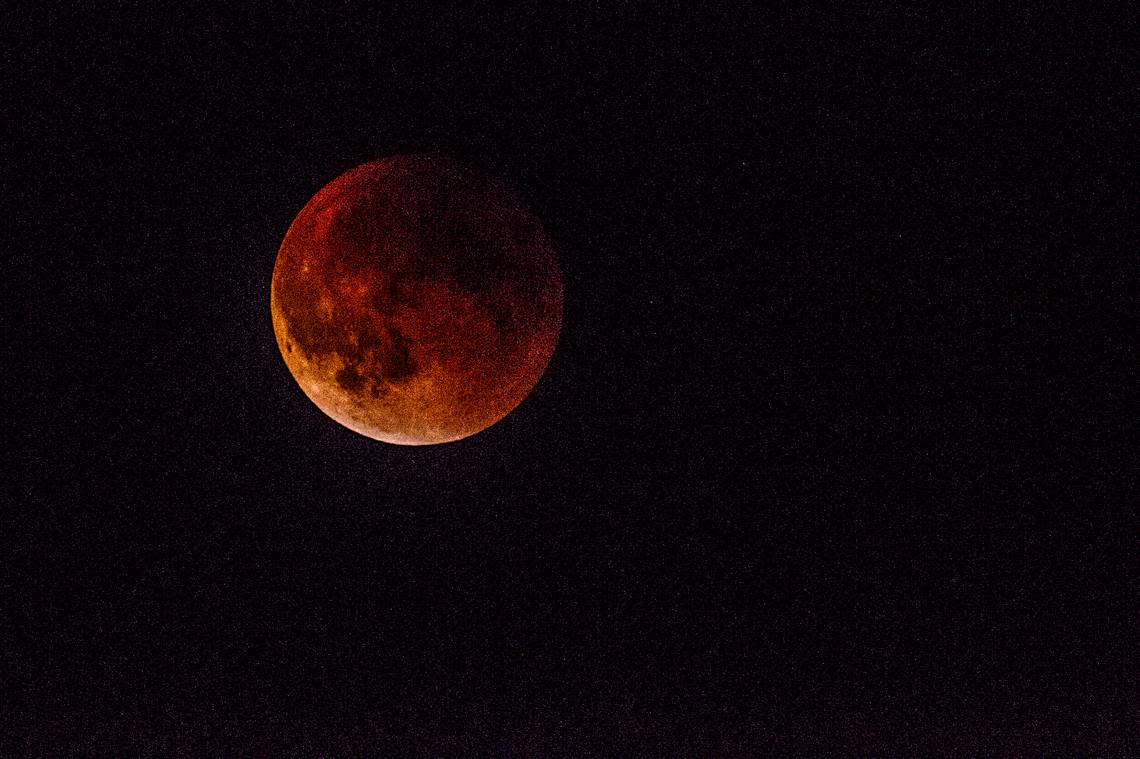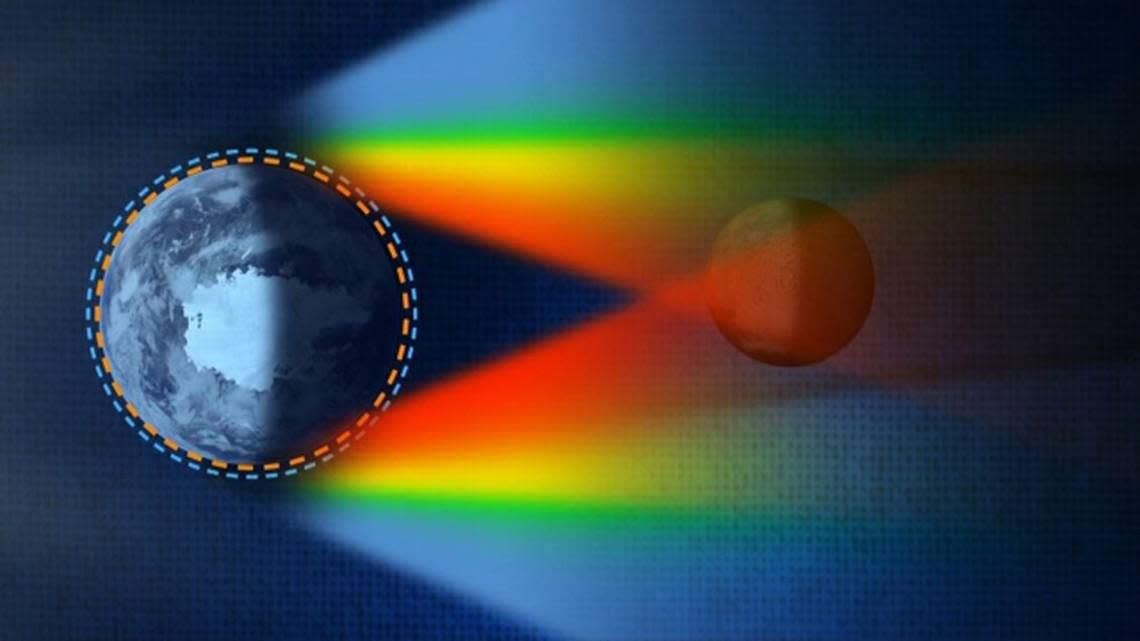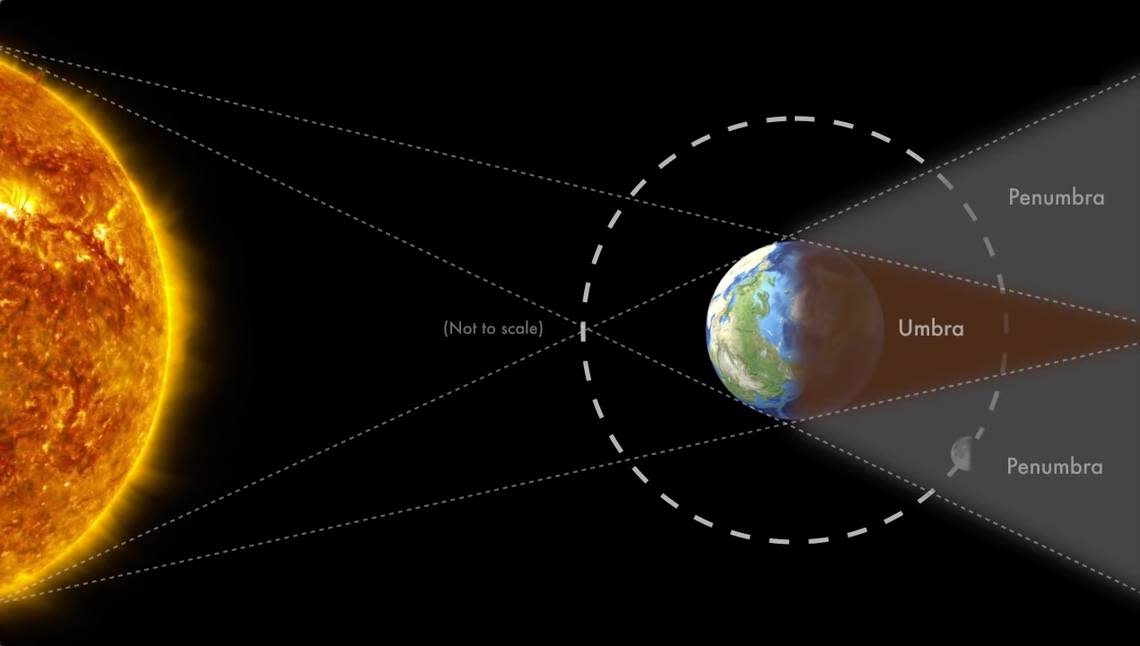How to see the total lunar eclipse Tuesday morning
A full “Blood Moon,” weather permitting, will be visible over the skies of North Texas early Tuesday morning, according to University of Texas at Arlington astrophysicist Levent Gurdemir.
This will be the third total lunar eclipse in 18 months. The next event is not until May of 2025.
“Well, this is a lucky year because this is the second total eclipse of the year,” Gurdemir said, alluding to the total lunar eclipse we had in May. “It’s not going to happen [again] until 2025.”
The National Weather Service forecast for Dallas-Fort Worth early Tuesday morning calls for partly cloudy skies with temperatures in the mid 60s.


Why is a total lunar eclipse referred to as the ‘Blood Moon’?
The most distinctive feature of a total lunar eclipse is how the moon turns blood red as it disappears into the Earth’s shadow.
“Instead of the moon disappearing, the moon gets a very dark red color,” the UTA astrophysicist said. “That’s what makes it special.”
Apparently, a thin layer of the Earth’s atmosphere, acting as a prism, Gurdemir said by way of an explanation, refracts the colors in the sun’s light diverting the red hues into the shadow, giving the “Blood Moon” its distinctive coloration.
According to the UTA astrophysicist, it is the same process that gives us the perception of our sky as blue. As the angle of sunlight sharpens at the beginning and end of every day, colors of the spectrum are refracted to make our sky appear red, orange and purple during sunrise and sunset.

What creates a total lunar eclipse?
The celestial phenomenon occurs when the sun, Earth, and moon align, according to the NASA Jet Propulsion Laboratory, with the sun and moon on opposite sides of our planet and its shadow enveloping the moon.
A total lunar eclipse only happens during a full moon phase.
When is the best time to view the total lunar eclipse?
There is an hour-and-a-half period starting shortly after 4 a.m. Tuesday when the totality of the eclipse can be best viewed, Gurdemir said. This is when the moon is in the Earth’s shadow and begins to turn red.
There is no special equipment needed. Stargazers can look directly at the moon as it slowly creeps into the shadows, unlike when viewing a solar eclipse.
By 4:59 a.m., the moon will be halfway across its journey through the earth’s shadow and is the best time to see it turn a dull red-orange.
2:02 a.m. - The edge of the Moon will begin entering the penumbra. You’ll likely only notice dim shading (if anything at all).
3:09 a.m. - The edge of the Moon will begin entering the umbra and significant darkening will be noticeable.
4:16 a.m. - The Moon will be completely inside the umbra, marking the beginning of the total lunar eclipse, also known as totality.
4:59 a.m. – The Moon will be halfway through its path across the umbra, marking the moment of greatest eclipse, when the moon turns reddish-orange.
5:41 a.m. - The edge of the Moon will begin exiting the umbra and moving into the opposite side of the penumbra. At this point, the Moon will have just set in the most northeastern portions of the continental United States. More and more eastern states will see the Moon set over the next hour as the eclipse progresses.
6:49 a.m. - Those in the central United States will see the Moon begin setting around this time. The Moon will continue exiting the penumbra until the eclipse officially ends at 7:56 a.m., remaining visible only to viewers in the western United States.
The total eclipse of the moon will be dramatic
Timing of the total lunar eclipse in Texas could not have been better. With the moon scheduled to set at 7 a.m. Tuesday, the eclipse will happen as the moon gets closer to our horizon.
“The moon is going to be low in the horizon, but it will be high enough to be visible,” Gurdemir said.
Because of an optical illusion, the moon will appear larger as it drops closer to our horizon, he said. It also gives shutterbugs a chance to capture the Blood Moon with a landmark in the foreground for perspective.
